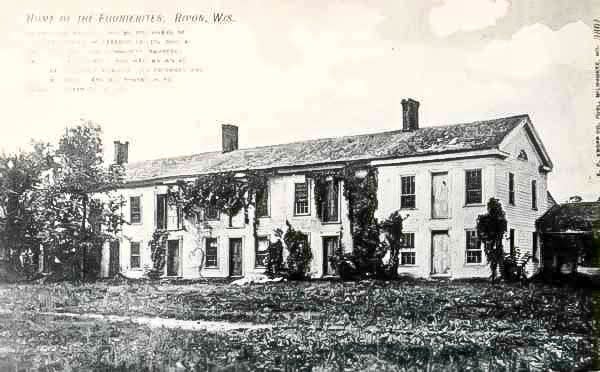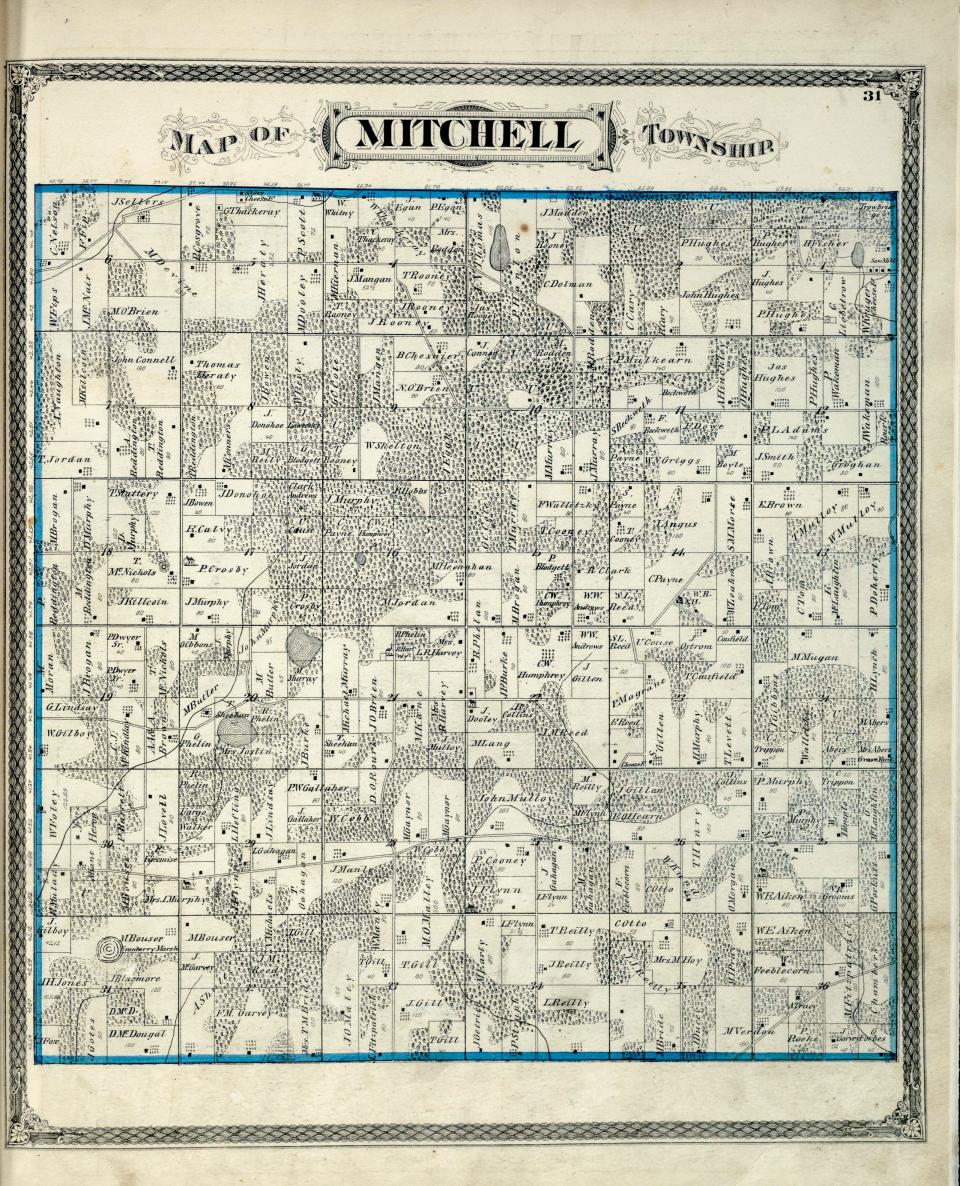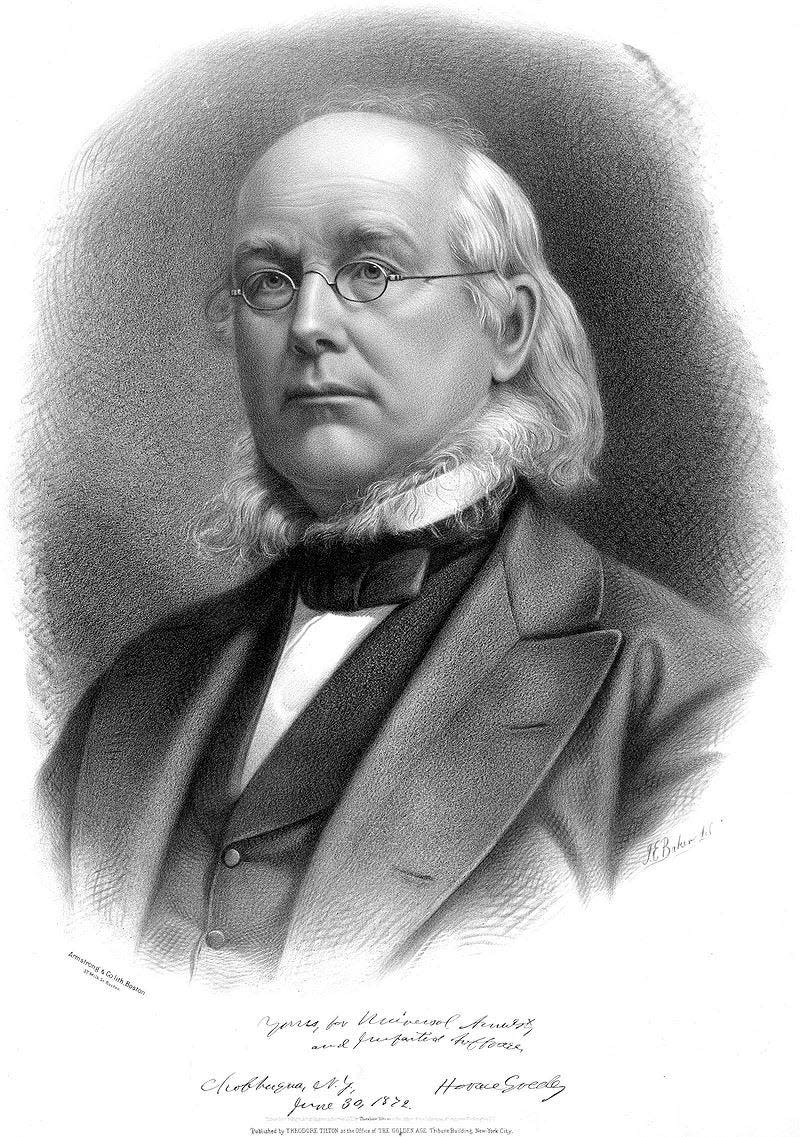Sheboygan County’s early settlers flirted with this French social reform philosophy embraced by Horace Greeley: Throwback
- Oops!Something went wrong.Please try again later.
- Oops!Something went wrong.Please try again later.
SHEBOYGAN FALLS - In the early 1840s, Sheboygan Falls was considered the main city in Sheboygan County. Sheboygan, at that time, was considered merely a stopping point for logging ships taking their timbers south before the strong immigrant wave of European settlers arrived to grow Sheboygan.
As Sheboygan Falls was the urban center at the time, it was common for people to meet to discuss their futures and ways in which to live in this new land.
According to information provided by Katie Reilly of the Sheboygan County Historical Research Center, in 1846, the Spring Farm experiment in the town of Mitchell was created with the encouragement of a Dr. Cody.
Dr. Cody was a proponent of Fourierism, using the concept developed by Charles Fourier, a celebrated French socialist.
Fourier conceived communities he called "phalanxes," based upon structures called Phalansteres or "grand hotels." These community buildings were four-level apartment complexes in which the richest lived in the uppermost apartments and the poorest had a ground-floor residence.
The community would be self-contained, meaning the developed group would provide for all their needs and wants.
Several communities in the area, including Sheboygan County, Kewaskum and Ripon, would embrace the concept.

Wealth in this society was determined by one's job. Jobs were assigned based on the interests and desires of the individual. Jobs workers didn't enjoy doing would receive higher pay.
In the Fourier concept, the founder later in life considered trade, which he associated with Jews, to be the "source of all evil" and advocated that Jews be forced to perform farm work in the phalansteries.
The Fourier community in Sheboygan County is described in Gustave W. Buchen's "Historic Sheboygan County" book, which was first published in the 1940s.
In that society, when a community became fully established with about 400 families, it would be sufficient to include the whole circle of human capacities, but yet not too large for an adequate human life.
The inhabitants should eat at a common table, and live in one immense edifice, in the center of a large, cultivated domain that featured workshops, studios, and all the appliances of industries and art with the addition of means for amusement and pleasure.
The Spring Farm experiment began after Dr. Cody persuaded 10 families — after many meetings and discussions in Sheboygan Falls — that this would be the ideal living arrangement for them in the town of Mitchell.
Not all the people were in agreement that town of Mitchell was the ideal location. The first group moved to sections one and 12 in the northeast corner of the town.

A second group split off and conceived the idea of creating a community north of the Pigeon River mouth.
Because of those differences, the families' division weakened the communal concept.
The town of Mitchell group was under the leadership of Benjamin Trowbridge. The first to arrive were families of B.C. and James Trowbridge, John and Daniel Sanborn, Albert Rounseville and James O' Cain.
The following year, the families of James Angus, John Hurn, John Smith, Ebenezer S. Adams, and Alfred Launsdale, who came from Sodus, New York, would arrive.
The group, which lasted about three years, were proud of their individualism. A firsthand account by B.C Trowbridge said, "We obtained no aid from without, what we did not provide for ourselves, we went without." The individual families would own and control their land, instead of owning it as a community.
The group called themselves the Spring Farm Phalanx after the adjacent springs.
In 1847, just before Wisconsin became a state in 1848, the Spring Farm group petitioned for a charter, but the territorial legislature opposed making Wisconsin "a breeding place for reformers" in denial of the request.
It is good to note that in the 1840s the Great Plains was considered Indian Territory. Texas was an independent country until 1846. The Southwest belonged to Mexico, and the far northwest region — called Oregon Country — was held jointly until 1846 by the United States and Great Britain.
During that era, well-known New York Tribune newspaper editor Horace Greeley encouraged the settlement of America's West, including Wisconsin. Greeley told his readers, "Fly, scatter through the country, go to the Great West, anything rather than remain here ... the West is the true destination." Even though many have claimed Greeley created the phrase, "Go west young man," he never said that.

Greeley spoke out in opposition in the massive accumulation of wealth in the hands of a few, monopolies, and land speculators. He supported whig principles that included high protective tariffs, federally sponsored internal improvements, and the Bank of the United States. Topics that are still discussed today in politics.
Greeley was a life-long advocate for the working man and was a believer in utopianism. Greeley, Colorado, was named after his ideals and encouragements. He was a strong supporter for Charles Fourier and his Fourierite ideals.
In July 1847, the well-known Geeley visited relatives at the Spring Farm Phalanx. He traveled with H.N. and Laura Chase Smith as they came west to settle at Plymouth.
Mrs. Smith was an avid writer, documenting much of early Sheboygan County life. She wrote of their meeting with Greeley aboard their boat on the Great Lakes.
The concept of Fourierism caught on for only a short time in Sheboygan County. The groups disbanded by mutual agreement. Contributing factors included poverty, diversity of habits and dispositions, and harvest failures. The members scattered to other communities to resume their lives.
RELATED - Sheboygan County Flirted with Fourierism in the 19th Century
RELATED - Sheboygan Falls Rochester Inn was an early meeting place
RELATED - This Sheboygan County church built in 1855 suffered a fire in 1944 but still stands today
This article originally appeared on Sheboygan Press: Sheboygan County settlers considered Horace Greeley-backed Fourierism

